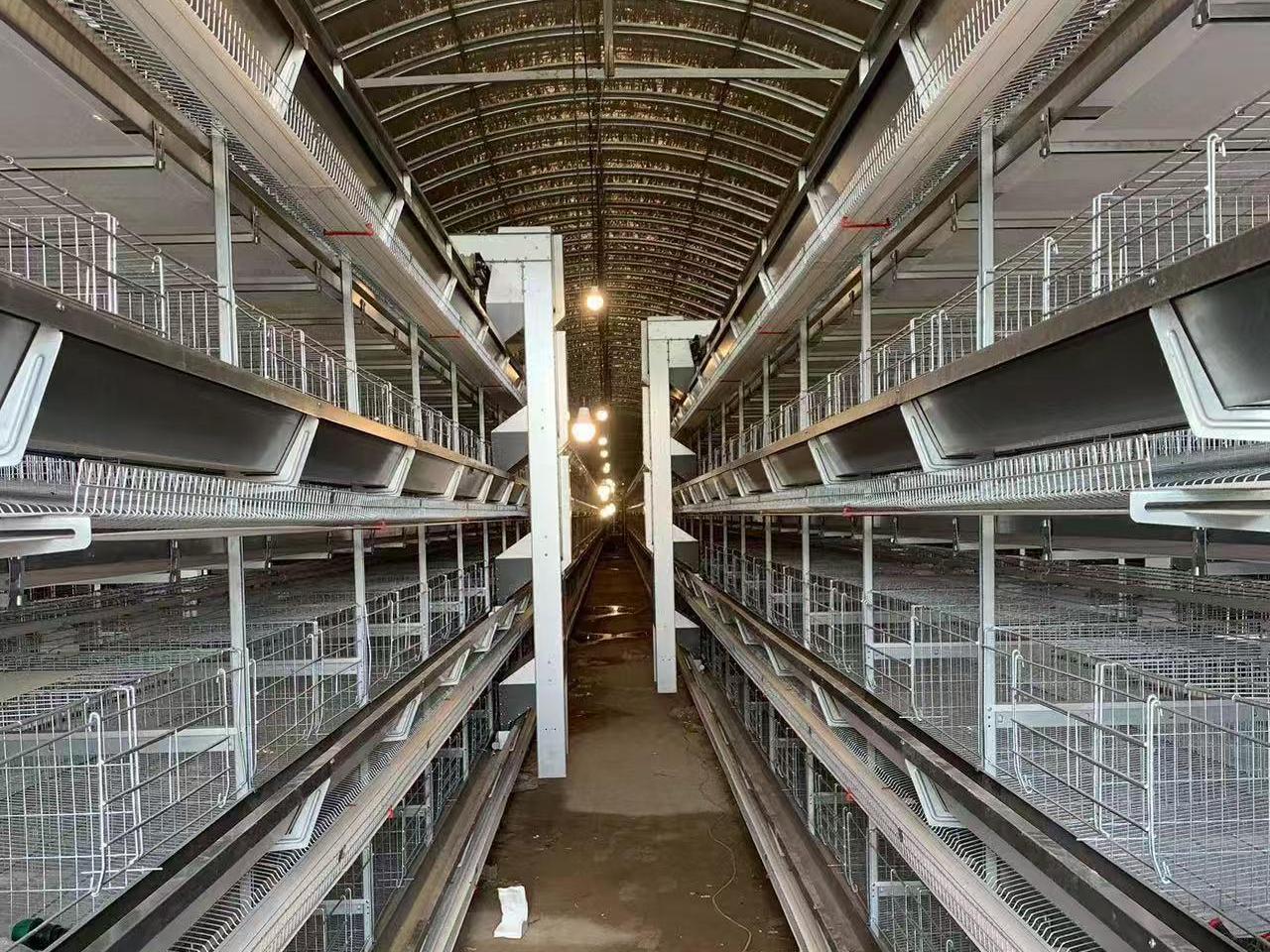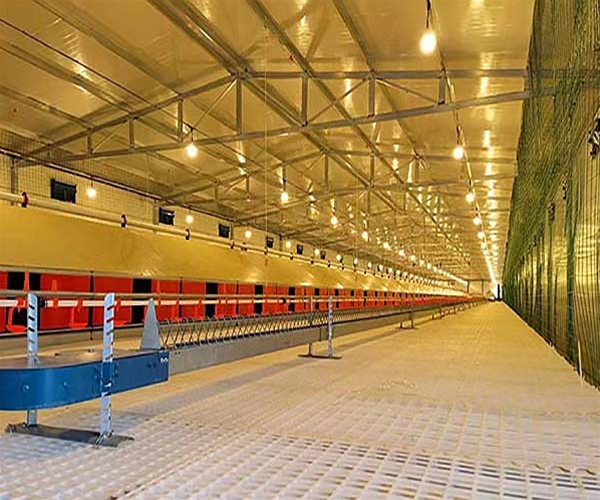Battery cage for hens have become the cornerstone of modern poultry farming. In fact, they have revolutionized large-scale egg production. Although these cages often spark controversy, they remain one of the most widely used systems in egg production due to their efficiency and cost-effectiveness. In this article, we will discuss the advantages, challenges, and role of battery cages in modern poultry farming.
What are Battery Cage for Hens?
Battery cages are small, enclosed spaces designed for egg production. They are typically made of wire mesh and arranged in vertical stacks to maximize space. As a result, each cage houses a few hens, providing a controlled and manageable environment.
Moreover, battery cage systems usually include automated feeding, watering, and egg collection systems, which significantly reduce labor costs and improve overall efficiency.
Advantages of Battery Cage for Hens
Battery cage offer several advantages, making them a popular choice in large-scale egg production. Let’s take a closer look at the main benefits:
1. Maximized Space Efficiency
- Battery cages allow farmers to house more hens in a smaller area. This is particularly important in commercial farming, where land is often limited and expensive.
- By stacking hens in multiple layers, farmers can increase the number of birds they manage without expanding the farm’s physical footprint.
2. Improved Egg Production
- Battery cages create optimal conditions for egg-laying. The limited space reduces the chances of hens injuring each other due to aggressive behavior.
- Furthermore, a well-controlled environment ensures that hens receive a stable supply of food and water, leading to improved egg production rates.
3. Reduced Labor Costs
- Battery cage systems reduce labor requirements by automating feeding, watering, and egg collection. Consequently, farmers can save time and money.
- In addition, farmers can remotely monitor the health of their hens and adjust environmental factors, further reducing the need for manual intervention.
4. Better Disease Control
- The compact environment of battery cages limits disease transmission. Since each hen is housed in an individual compartment, there is less direct contact between them, which helps prevent the rapid spread of diseases.
- Many modern battery cage systems also include ventilation systems that improve air quality and reduce the likelihood of respiratory illnesses.
5. Simplified Management
- Battery cages make management easier by providing individual spaces for each hen. As a result, farmers can easily monitor the health and egg production of each bird.
- This system enables farmers to quickly identify any health issues and address them before they affect the entire flock.
Challenges and Controversies of Battery Cages
Despite their many advantages, battery cages face criticism and controversy. For example, animal rights activists and welfare organizations have raised concerns about the welfare of hens in these systems, particularly regarding their confined space and lack of opportunity for natural behaviors.
1. Animal Welfare Concerns
- One of the main criticisms of battery cages is that they provide limited space for hens to move around. Thus, hens are unable to perform natural behaviors such as scratching, dust bathing, and spreading their wings.
- As a result, this confinement can lead to physical and psychological stress, which may result in health problems like brittle bones, feather loss, and a shorter lifespan.
2. Legal and Ethical Issues
- Many countries are putting pressure on the industry to ban or regulate the use of battery cages. For instance, some European countries have passed legislation to phase out traditional battery cages in favor of enriched cages or cage-free systems.
- While battery cages remain legal in many regions, due to growing public concern about animal welfare, regulations are gradually changing.
3. Ethical Farming Alternatives
- As a result of these concerns, alternative housing systems such as enriched cages, free-range, and cage-free systems have been developed. These systems, while offering more space and the ability for hens to engage in natural behaviors, typically require more land and resources.
- Furthermore, many consumers are willing to pay a premium for eggs produced by hens raised in more humane conditions, which has driven the demand for ethical farming practices.
The Future of Battery Cages and Egg Production
The future of battery cages in egg production is uncertain. Nevertheless, as animal welfare concerns continue to rise, the industry is evolving. While battery cages may continue to be used for some time, the trend is shifting toward more humane and sustainable alternatives.
Technological advancements are helping to improve conditions within battery cage systems. For example, modern battery cages offer more space per hen, better ventilation, and improved automation systems to reduce stress and improve hen welfare.
Conclusion
Battery cage for hens have long been a foundation of the poultry industry, offering significant advantages in terms of space efficiency, productivity, and cost-effectiveness. However, with increasing concerns about animal welfare, the industry is moving toward more ethical practices. Ultimately, whether battery cages continue to dominate the market or are replaced by more humane systems remains to be seen, but one thing is certain: the poultry industry is undergoing transformation. The future of egg production will likely find a balance between efficiency, sustainability, and animal welfare.
Frequently Asked Questions (FAQ)
1. Do battery cages affect the health of hens?
When designed properly, battery cages can reduce the spread of disease and increase production efficiency. However, long-term confinement may prevent hens from performing natural behaviors, causing psychological stress. To improve hen welfare, modern battery cage systems now offer more space and better ventilation.
2. Are battery cage systems suitable for large-scale farming?
Yes, battery cage systems are ideal for large-scale egg production. They maximize space usage, reduce land requirements, and improve farming efficiency through automation. For large farms that require effective management, battery cages are key to boosting egg production.
3. How do battery cage systems improve egg production?
Battery cage systems provide a stable feeding and watering environment, reducing stress and maintaining a steady egg production rate. Due to the limited space, conflicts between hens are minimized, helping to maintain overall health and improve egg production efficiency.
4. How difficult is it to maintain battery cages?
Modern battery cage systems are typically equipped with automation features, such as automatic feeding, watering, and egg collection. These systems reduce the need for manual intervention. Regular maintenance, cleaning, and hygiene checks will ensure the system operates efficiently over time.
5. Do battery cage meet animal welfare standards?
As consumer concern for animal welfare grows, modern battery cage systems increasingly consider hen well-being. Many systems now feature improved designs that provide more space, better ventilation, and reduced stress to enhance animal welfare.
Optimize Your Poultry Farming System Today!
Want to increase the efficiency of your egg production and boost egg output? Contact us now to learn more about our battery cage solutions and create a more efficient and sustainable farming environment.


